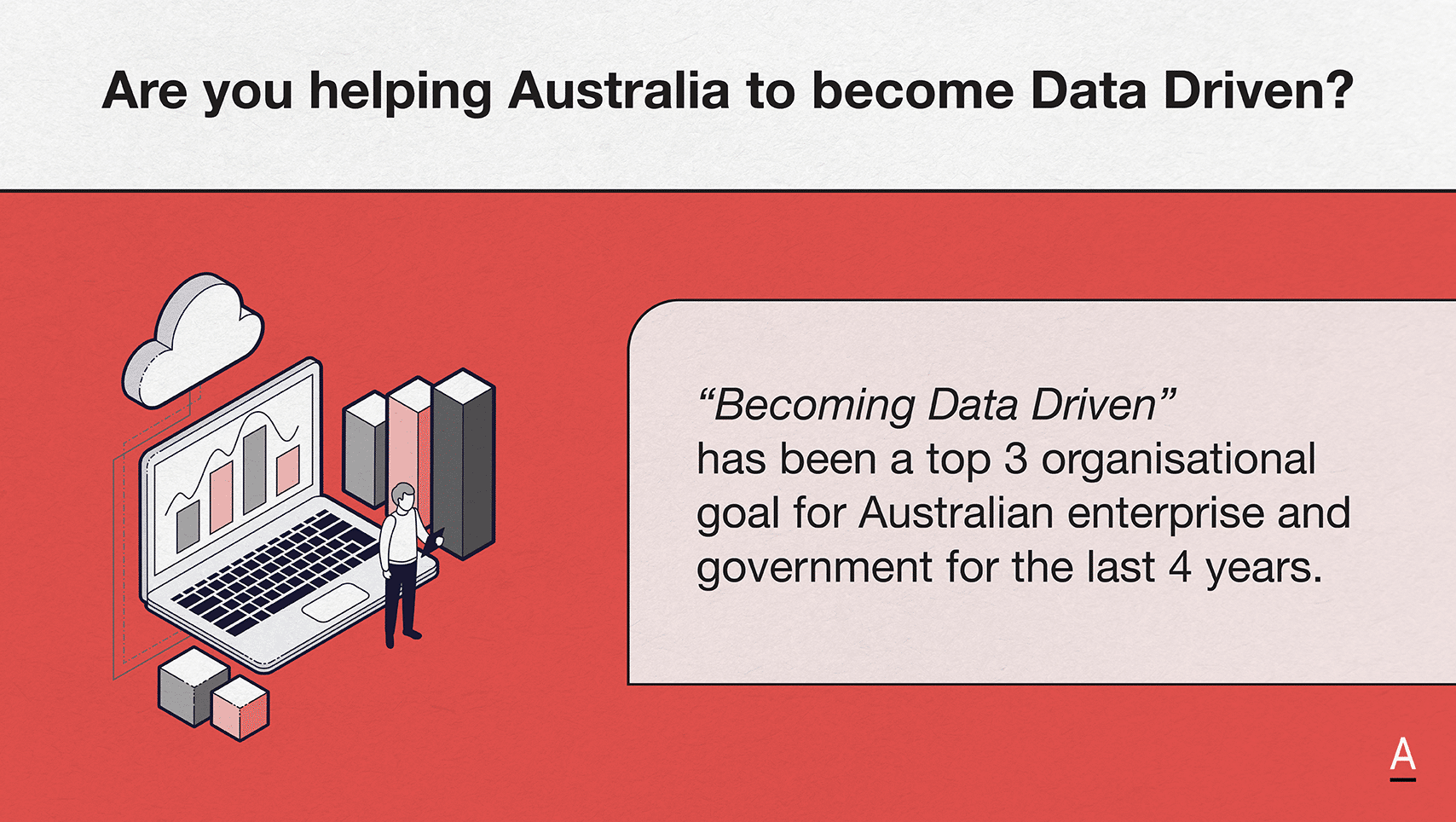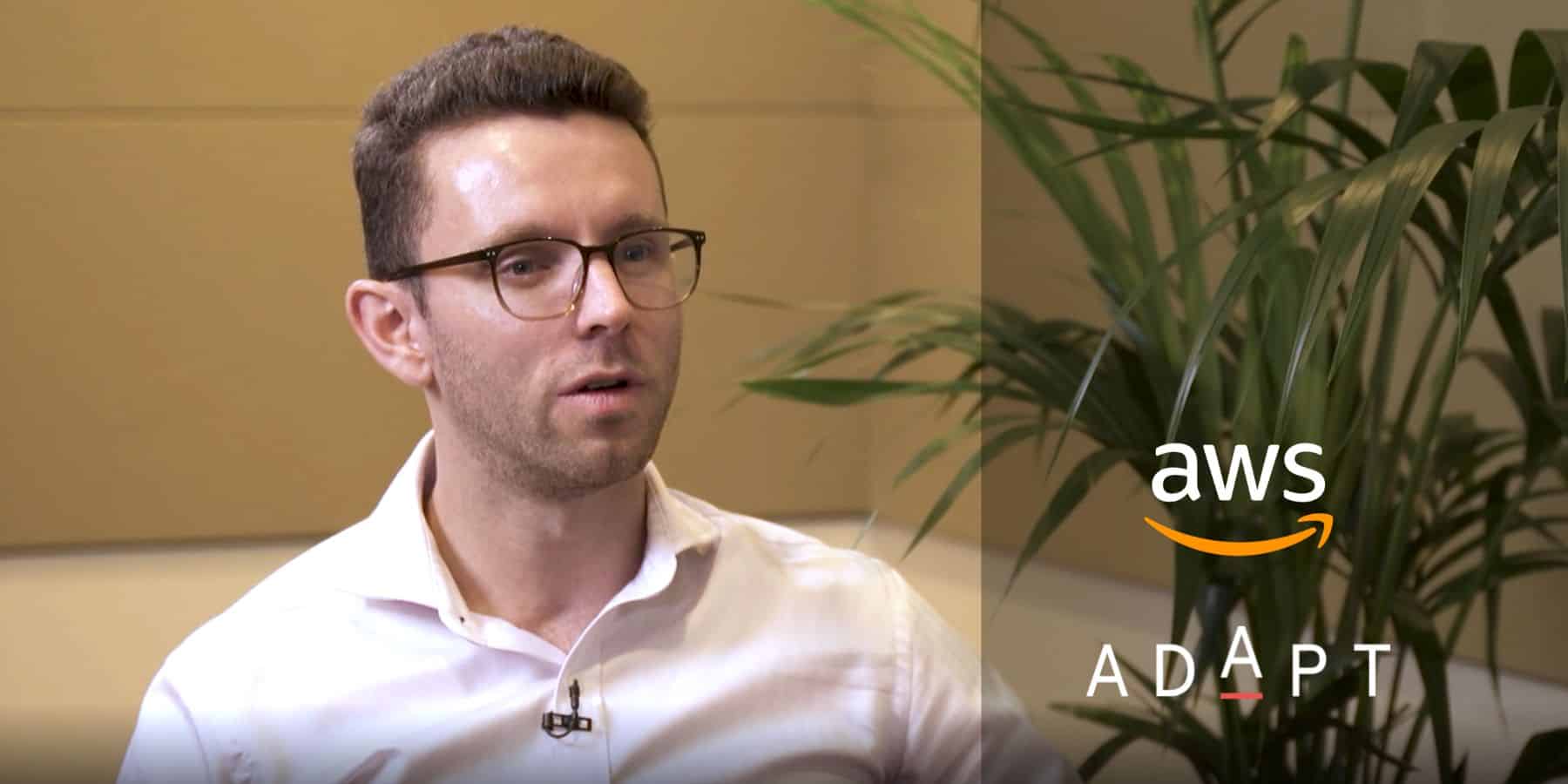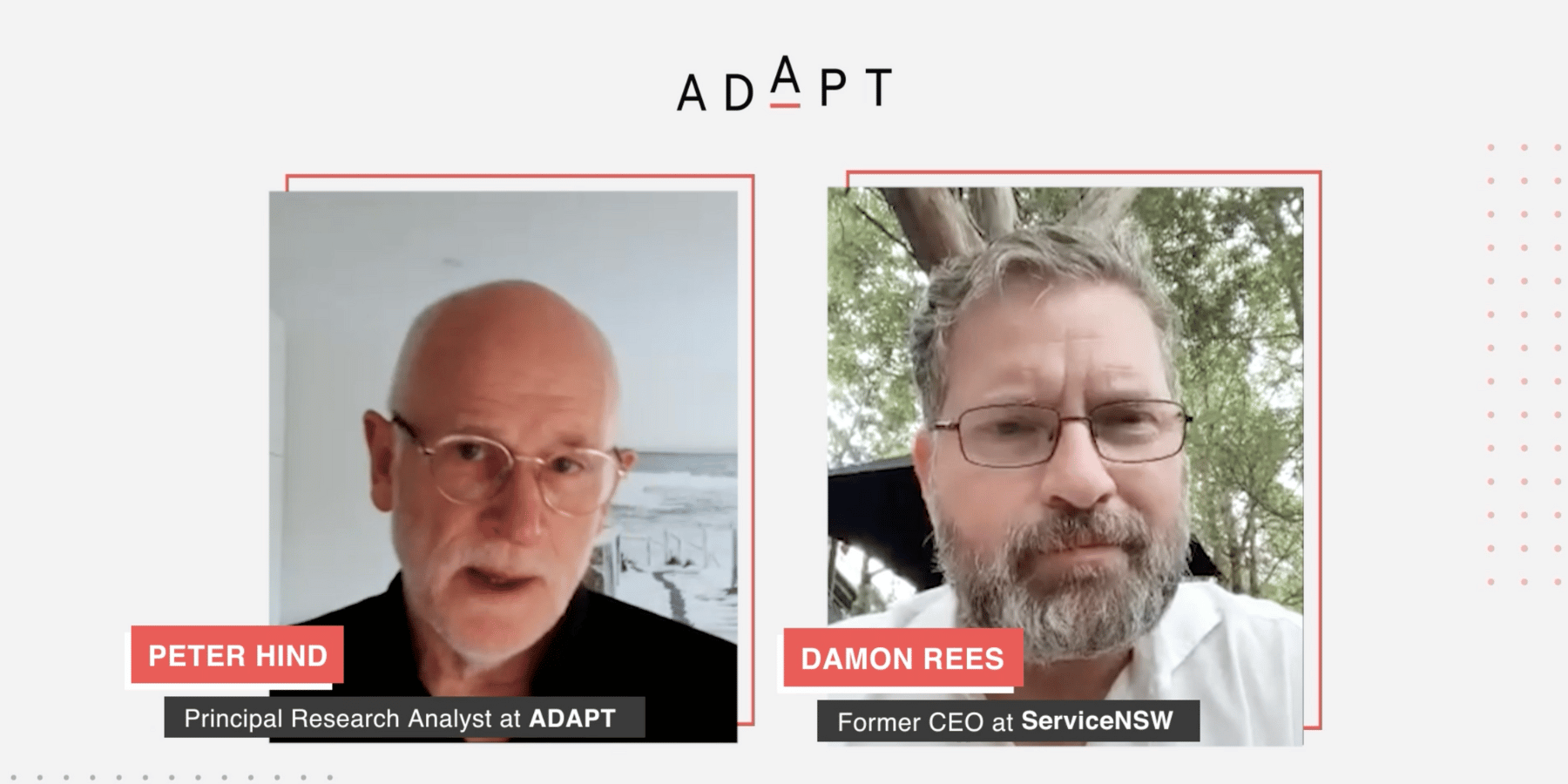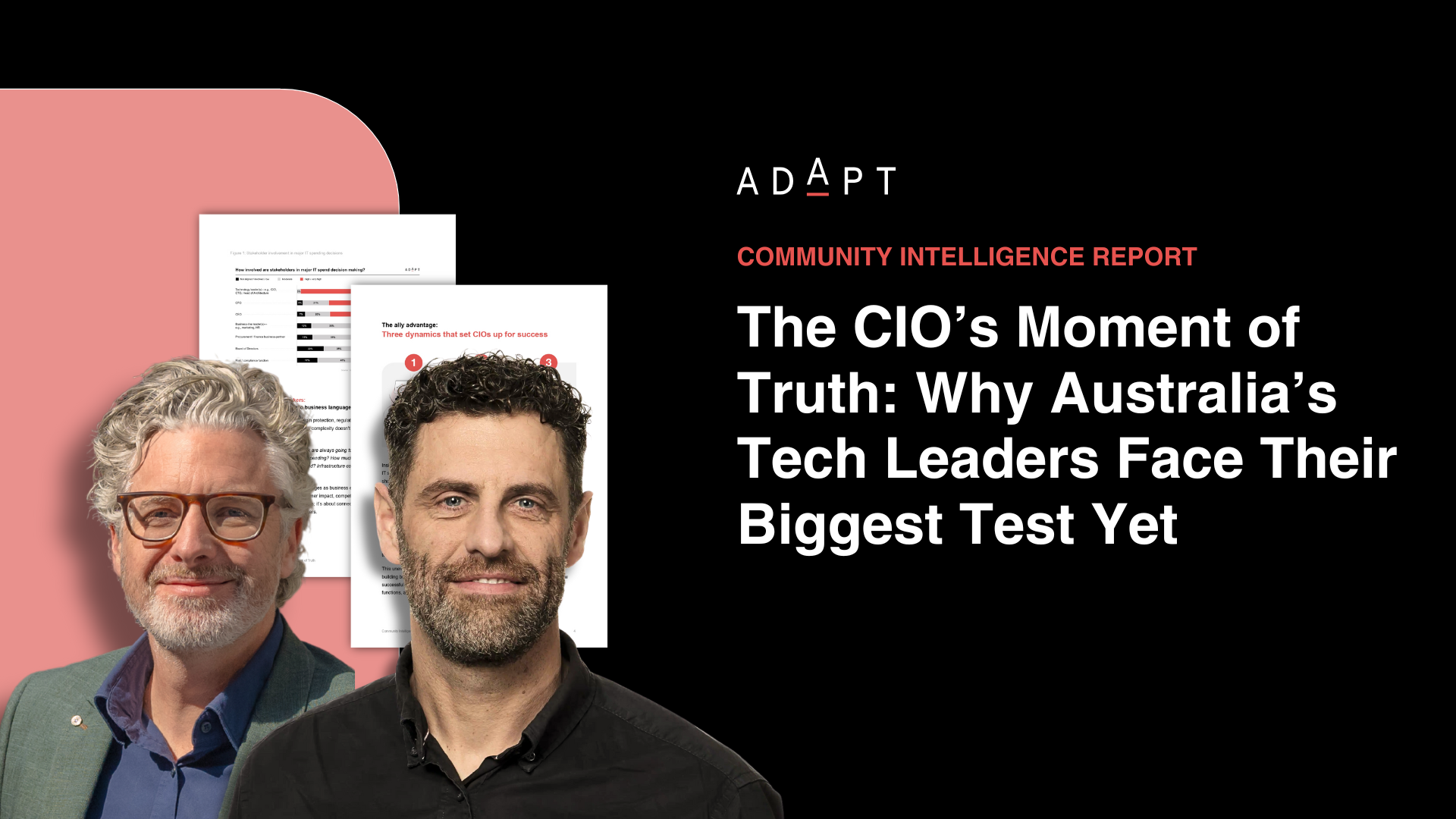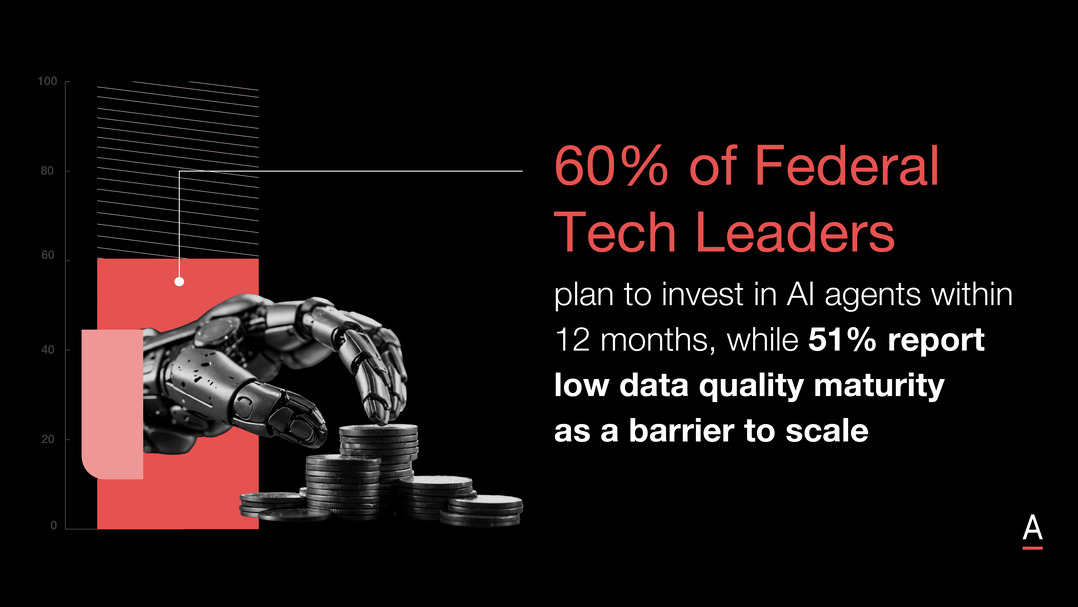Why 80% of Aussie CDOs are struggling to turn data into CX gains
ADAPT’s Digital Edge gathered 150 digital, CX, and product leaders focused on one shared ambition: delivering digital excellence by making their organisations radically easier to do business with.
ADAPT’s Digital Edge gathered 150 digital, CX, and product leaders focused on one shared ambition: delivering digital excellence by making their organisations radically easier to do business with.
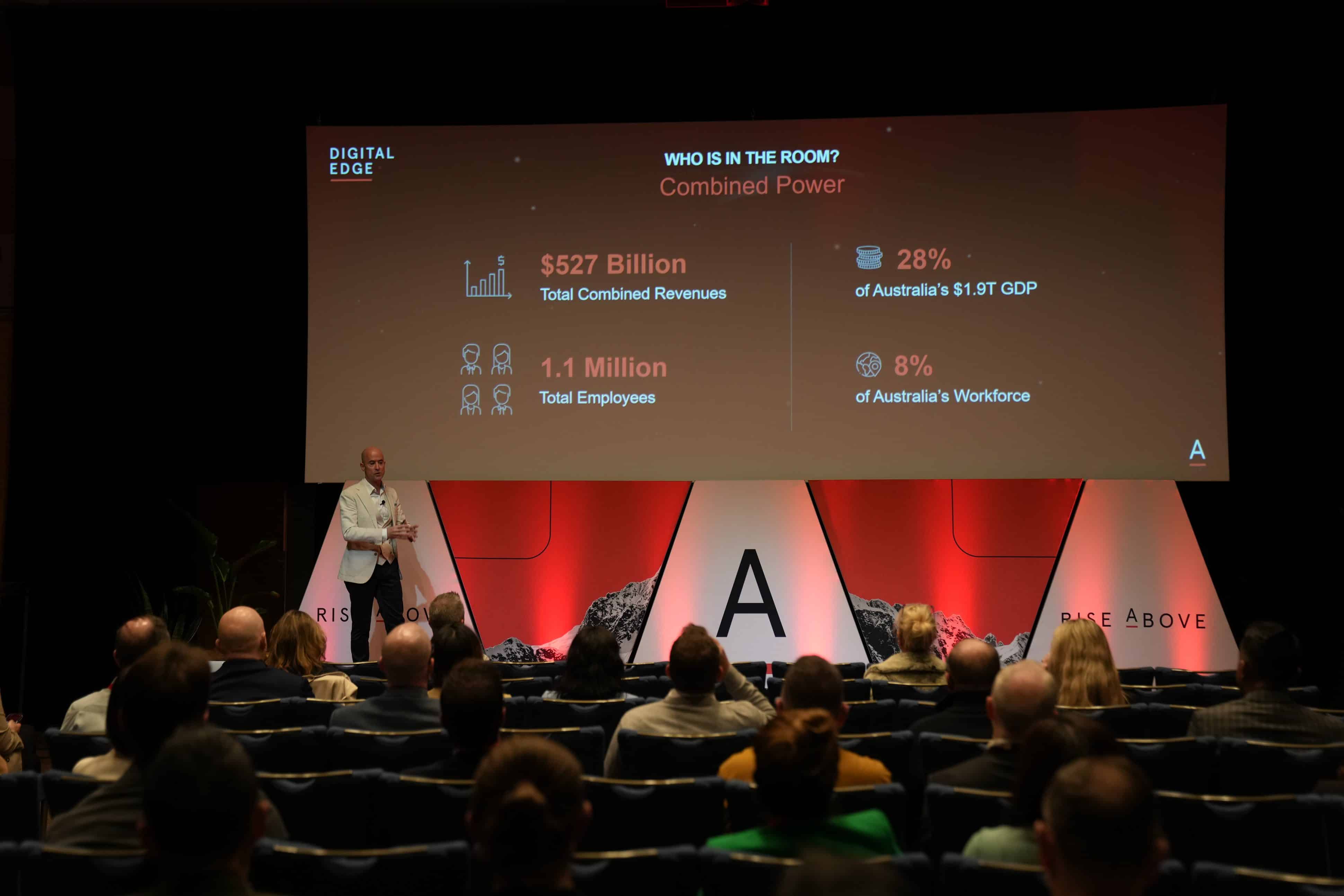
These leaders are modernising journeys, embedding intelligence, and simplifying experiences across Australia’s most influential enterprises.
While expectations around speed, convenience, and personalisation continue to rise, most organisations remain constrained by legacy processes, siloed teams, and immature platforms.
3 in 4 say their omnichannel experience is broken. Just 27% believe they are solving it.
Execution gaps are widening.
Only 4% of enterprises have rolled out AI literacy at scale.
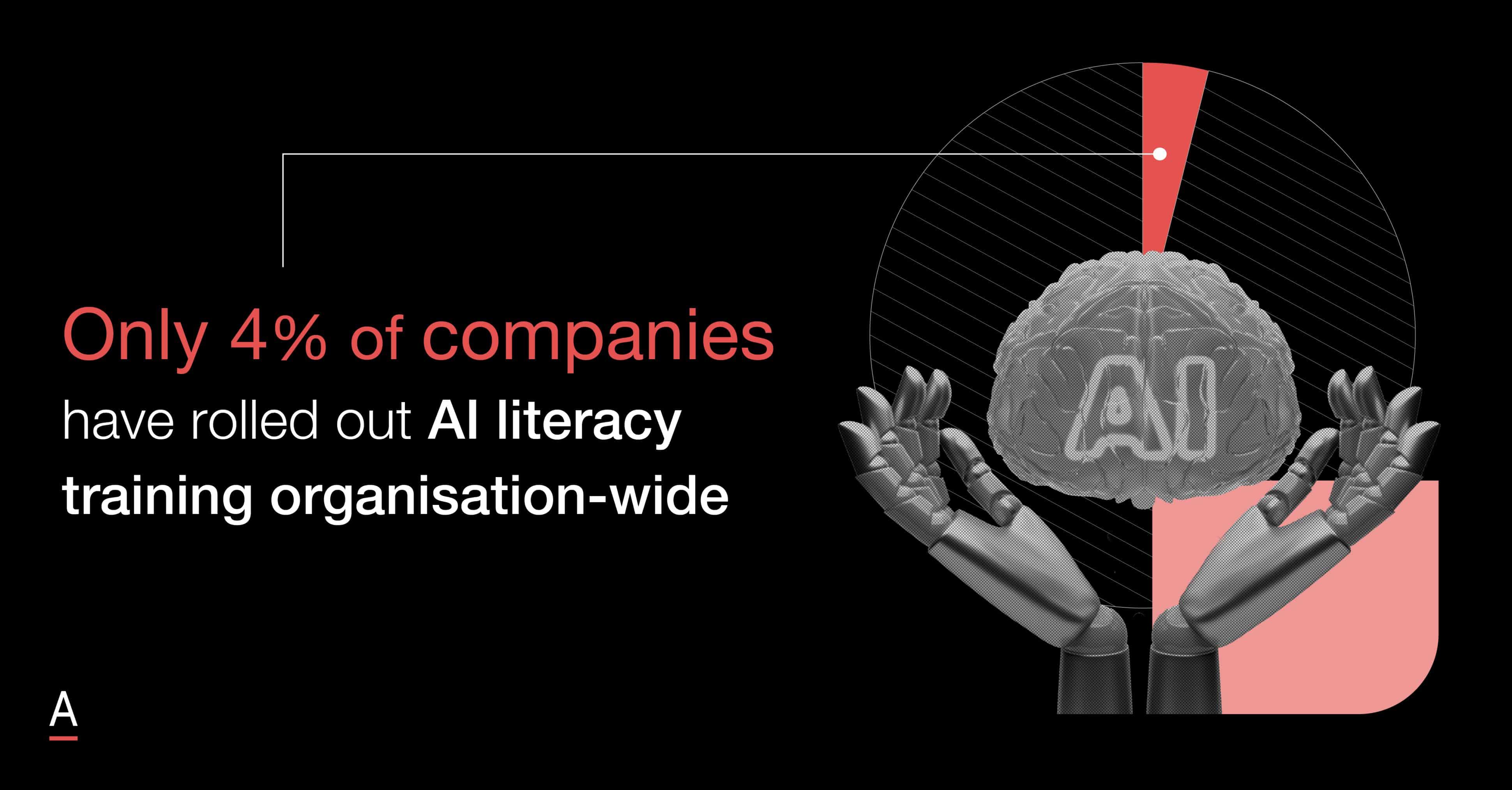
Nearly 80% say they still can’t use their data effectively to improve customer experience.
At the same time, pressure to prove value is intensifying.
45% of CDO-led initiatives are now expected to show ROI inside 12 months.
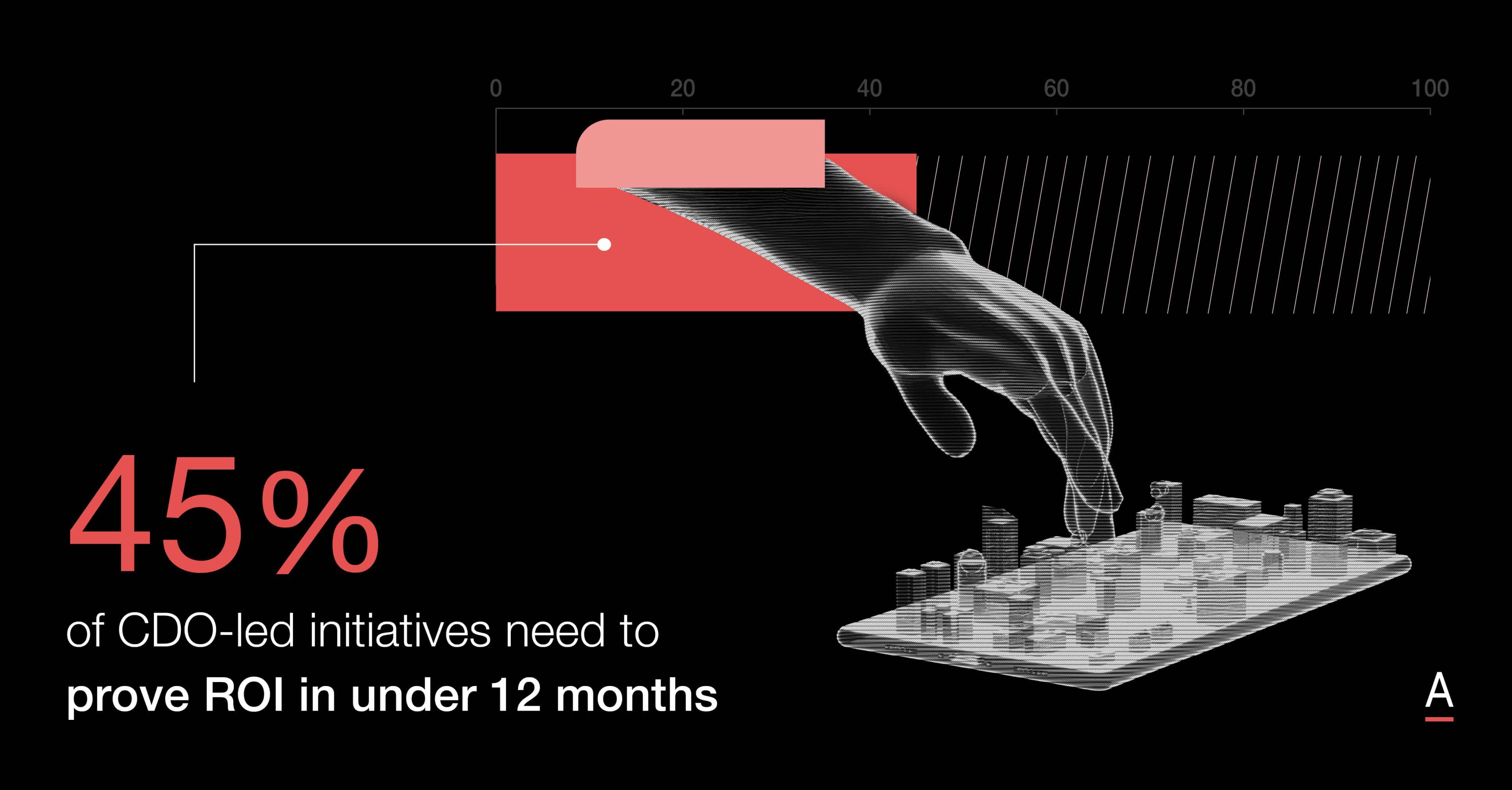
Digital Edge 2025 was built around this inflection point.
Leaders from Service NSW, City of Sydney, ServiceNow, Bain & Co, Pathfindr, QUT Business School, and more explored how to remove friction, deliver measurable outcomes, and scale transformation through better operating models, smarter platforms, and simpler experiences.
Connect customer expectations to design, delivery, and accountability
Customers expect speed, clarity, and ease at every touchpoint.
Gabby Fredkin, Head of Analytics and Insights at ADAPT, reported that although 89% of leaders prioritise CX, only 27 percent believe they are resolving omnichannel friction.
The disconnect stems from siloed teams, policy rigidity, and lagging feedback loops.
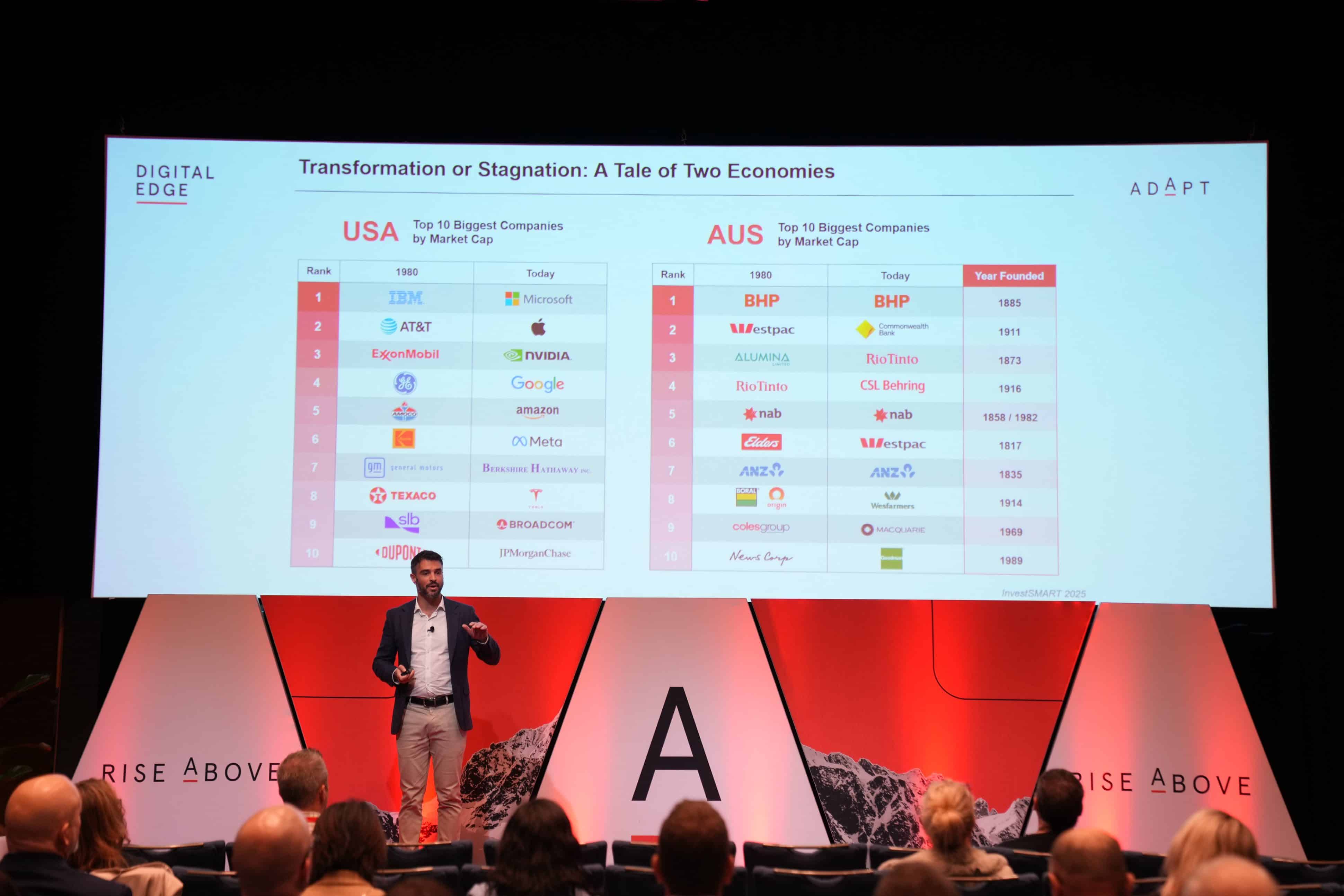
David Avrin, President of The Customer Experience Advantage, shared that 89% of consumers will abandon a brand after just two poor experiences.
He explained that customer experience is shaped less by what is delivered and more by how easy it is to engage.
Friction in sales, service, or follow-up impacts perception instantly, especially when 91% of consumers read reviews before engaging.
Meeting these expectations requires internal alignment across policies, workflows, and responsibilities.
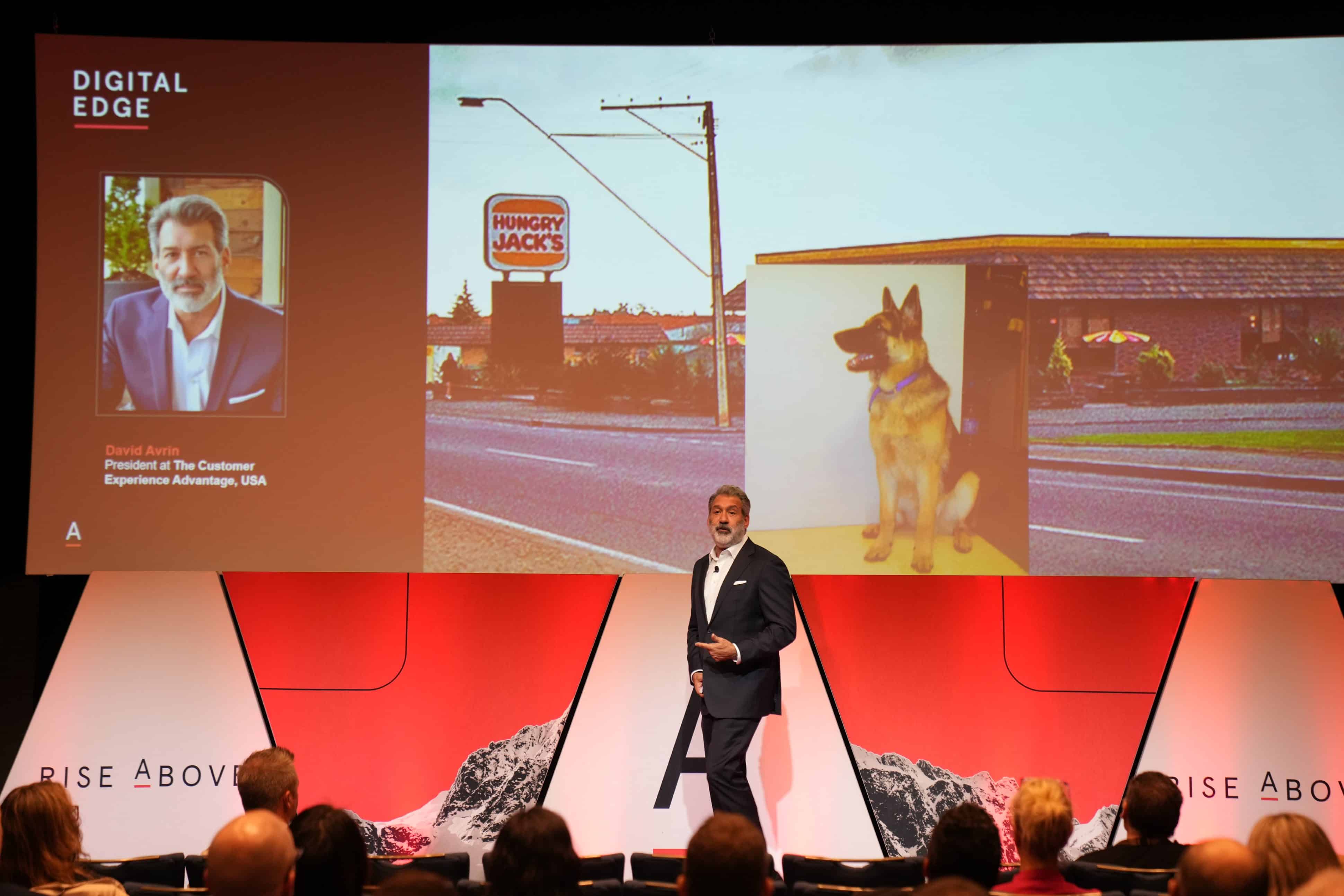
Delays often stem from legacy rules, unclear ownership, or operational friction.
The path to relevance is built on consistency, responsiveness, and removing barriers at every interaction.
In a panel discussion, Christina Igasto, Chief Digital Officer at Service NSW, and Tom Gao, Chief Technology and Digital Services Officer at City of Sydney, both reinforced the need to decentralise decision rights and design around user behaviour.
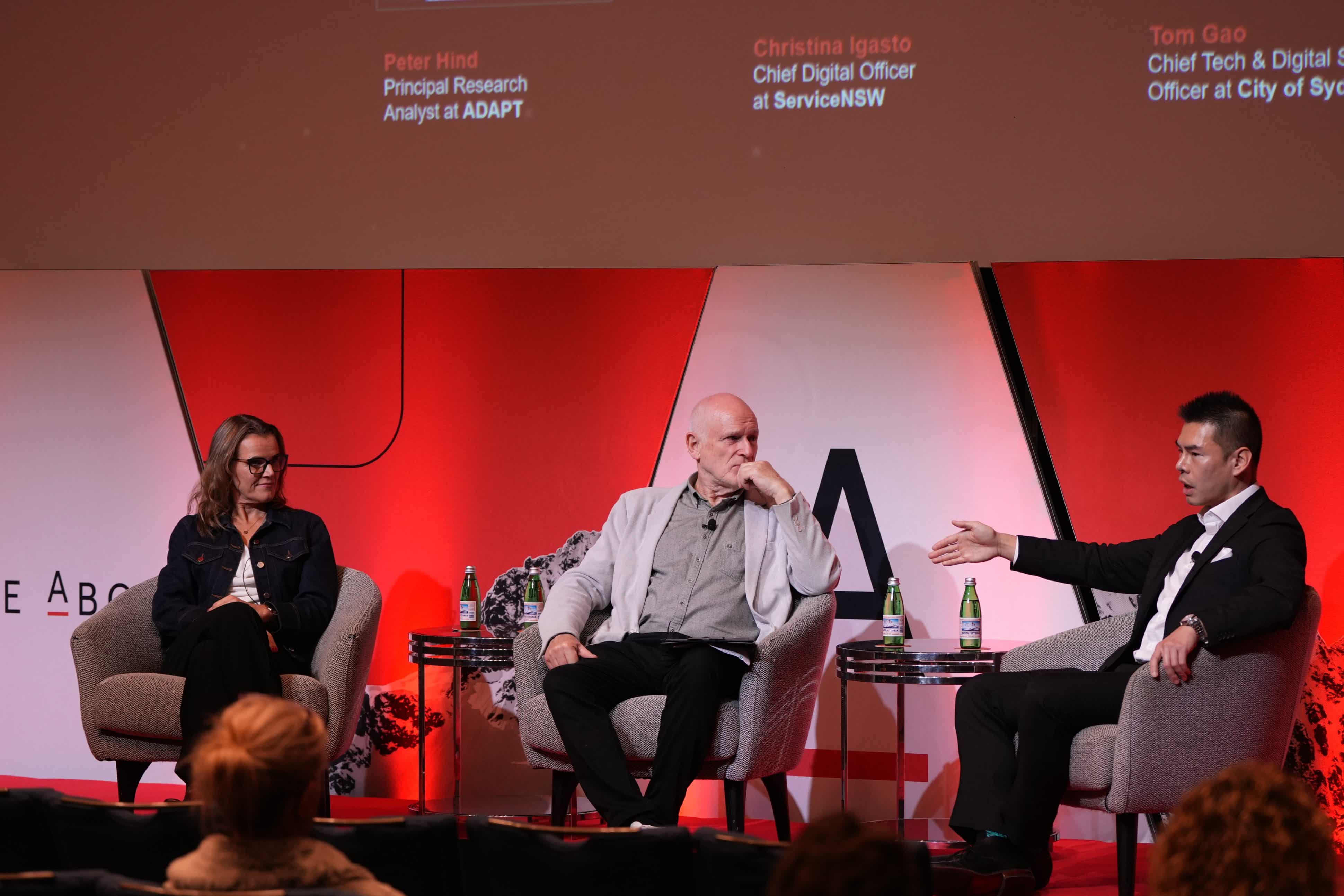
When delivery is shaped by internal structures rather than real-world usage, resolution lags and trust erodes.
Katrina Read, Director of Transformation for APJ at ServiceNow, and Stephen Hardy, Partner at Bain and Company, explained how AI-powered workflows can guide staff through faster, more consistent resolution.
Gabby’s research showed that 68% of organisations lack integrated feedback loops, further elevating the need for embedded intelligence.
In a separate Digital Edge interview, Stephen Hardy added that leading firms are using generative AI to create tailored experiences in real time, but warned that poor data quality continues to undermine these efforts.
He recommended a staged, use-case-driven approach to improve data readiness and unlock personalisation.

Responsiveness, integration, and clarity are no longer optional. They shape whether customers engage, advocate, or look elsewhere.
Build X-team models that reduce friction across journeys
Leaders are shifting away from function-first operating models.
Instead, they are adopting what Gabby identified as X-teams: cross-functional groups built around shared outcomes across customer, product, engineering, and operations.
Christina Igasto, Chief Digital Officer at Service NSW, described how her team removes barriers to delivery by integrating design and digital into policy formation and execution.
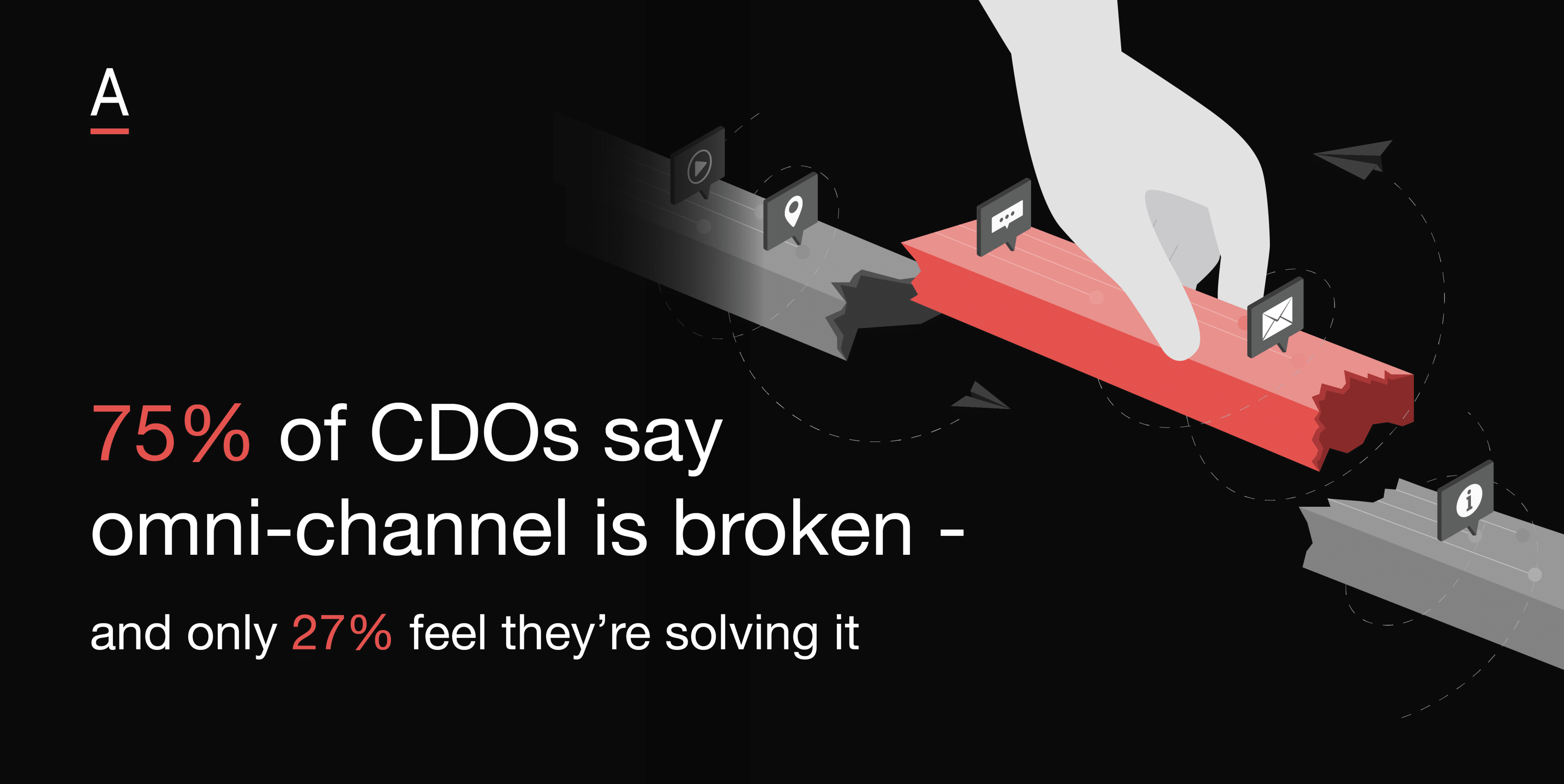
Embedding product thinking into services allows cross-functional teams to work to shared goals rather than isolated tasks.
Leading the panel discussion with Christina and Tom, ADAPT’s Principal Research Analyst Peter Hind explained how product-based funding models are helping accelerate value.
This enables recurring investment in digital capabilities rather than one-off project cycles, making it easier for X-teams to maintain momentum and measure progress.
The goal is to reduce internal effort while increasing external coherence.
Operationalise AI by targeting repeatable decisions
AI adoption is accelerating, but maturity remains limited.
Gabby’s data shows that only 4% of organisations have implemented company-wide AI fluency programs.
Yet 67% have already deployed AI agents in customer support or service delivery.
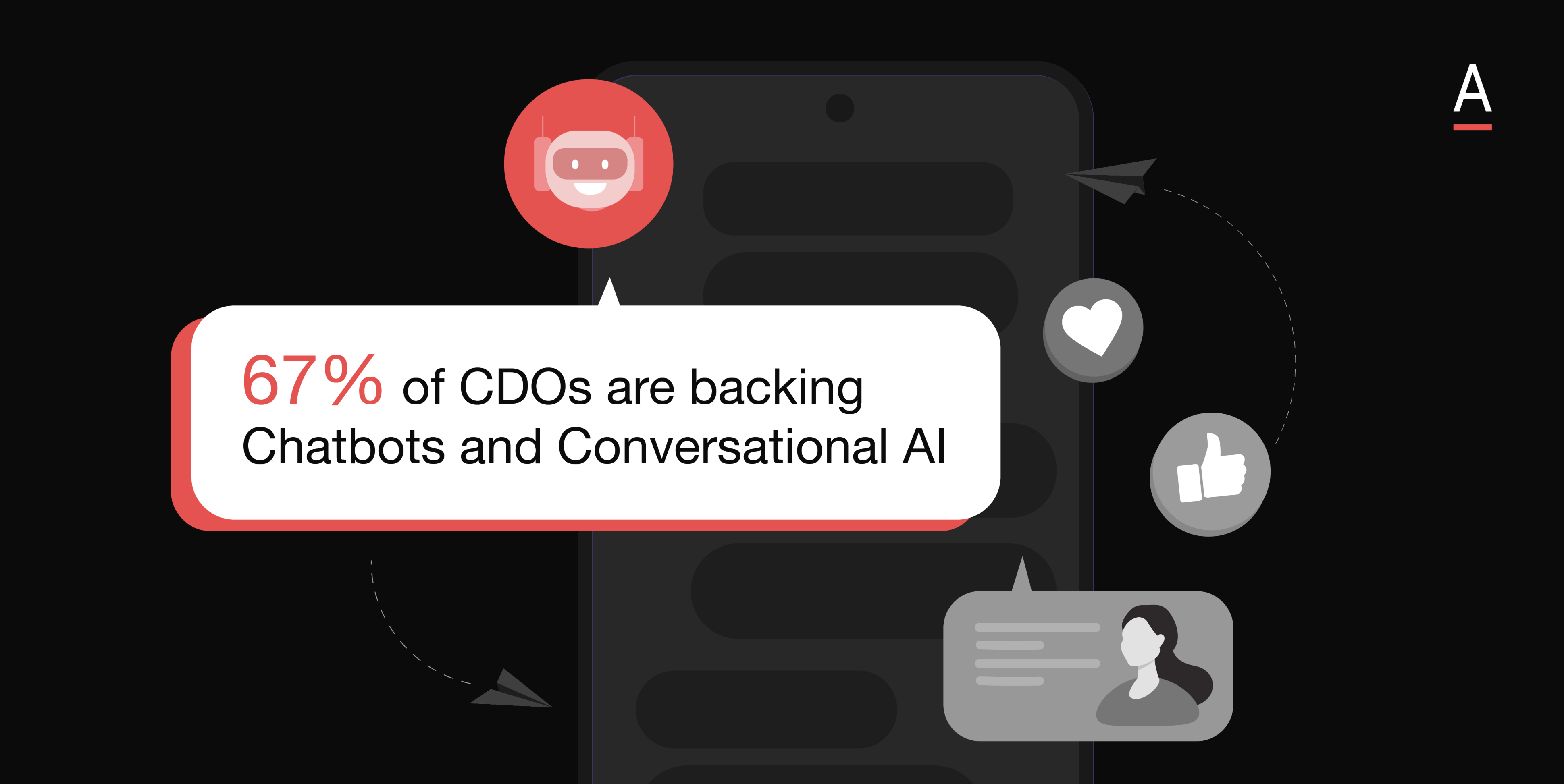
Dawid Naude, Founder and Chief Executive Officer at Pathfindr, explained how adoption requires clear use cases tied to immediate decisions and measurable outcomes.
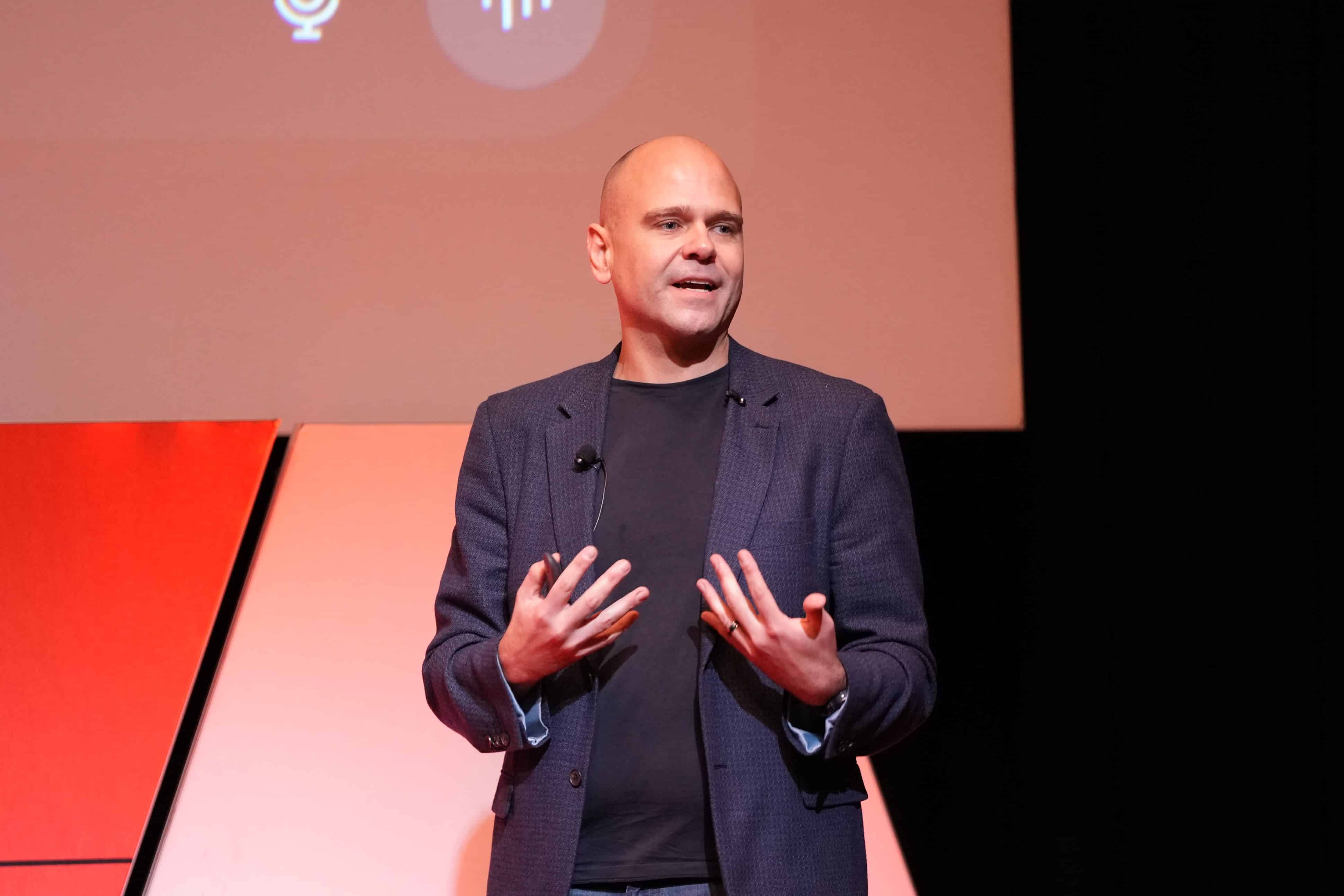
He shared examples from telco and government clients where simple AI interventions in triage and handoff delivered rapid gains in responsiveness and cost efficiency.
Stephen Hardy, Partner at Bain and Company, added that effective AI implementation depends on integration into digital workflows.
Personalisation at scale becomes possible only when AI is embedded into platform logic and design, not layered on top.
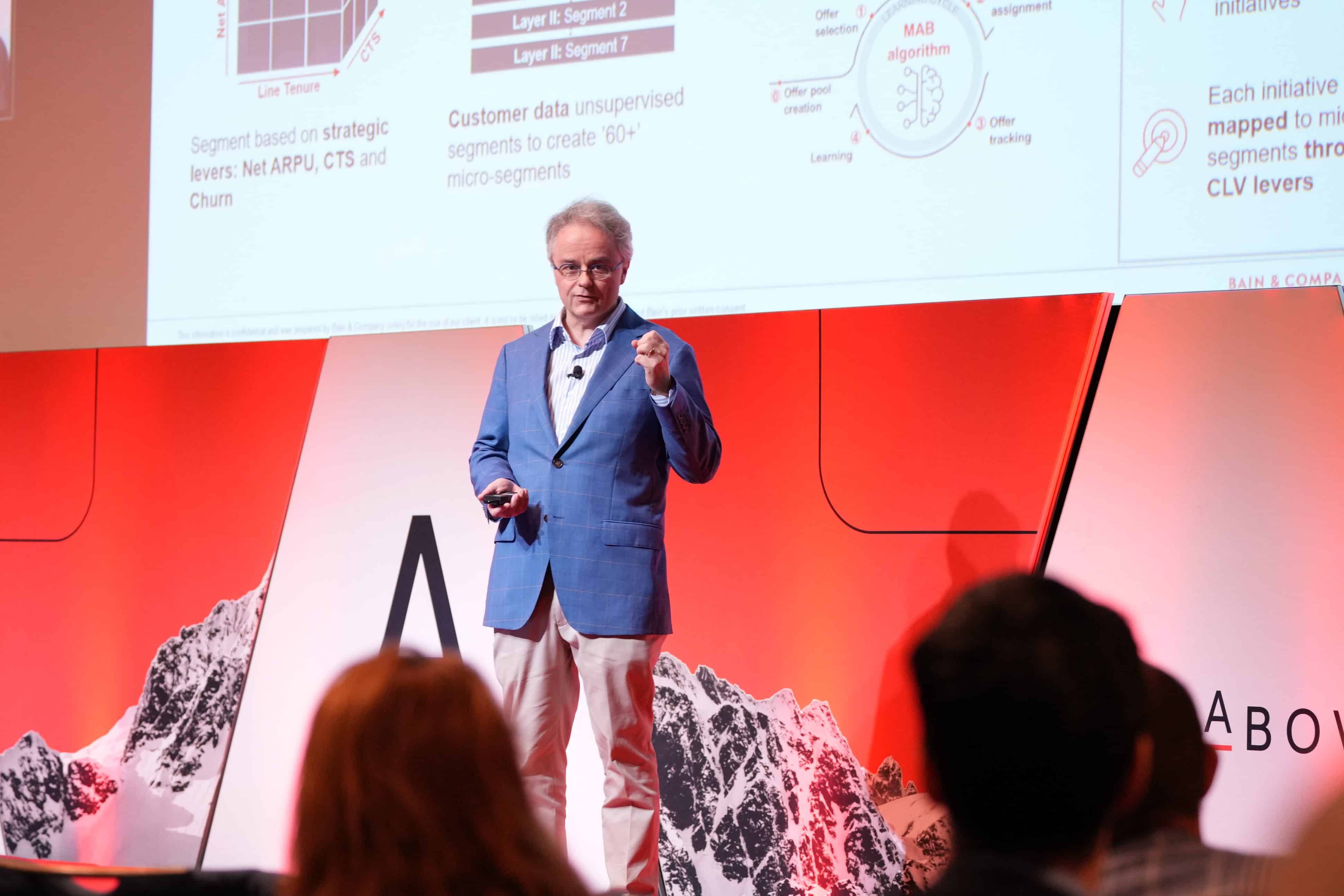
Dawid reinforced this point by urging leaders to invest in internal AI champions who drive consistent execution across teams.
In a separate Digital Edge interview, Dawid encouraged executives to experiment directly with general AI tools to build confidence and capability before scaling to targeted use cases.
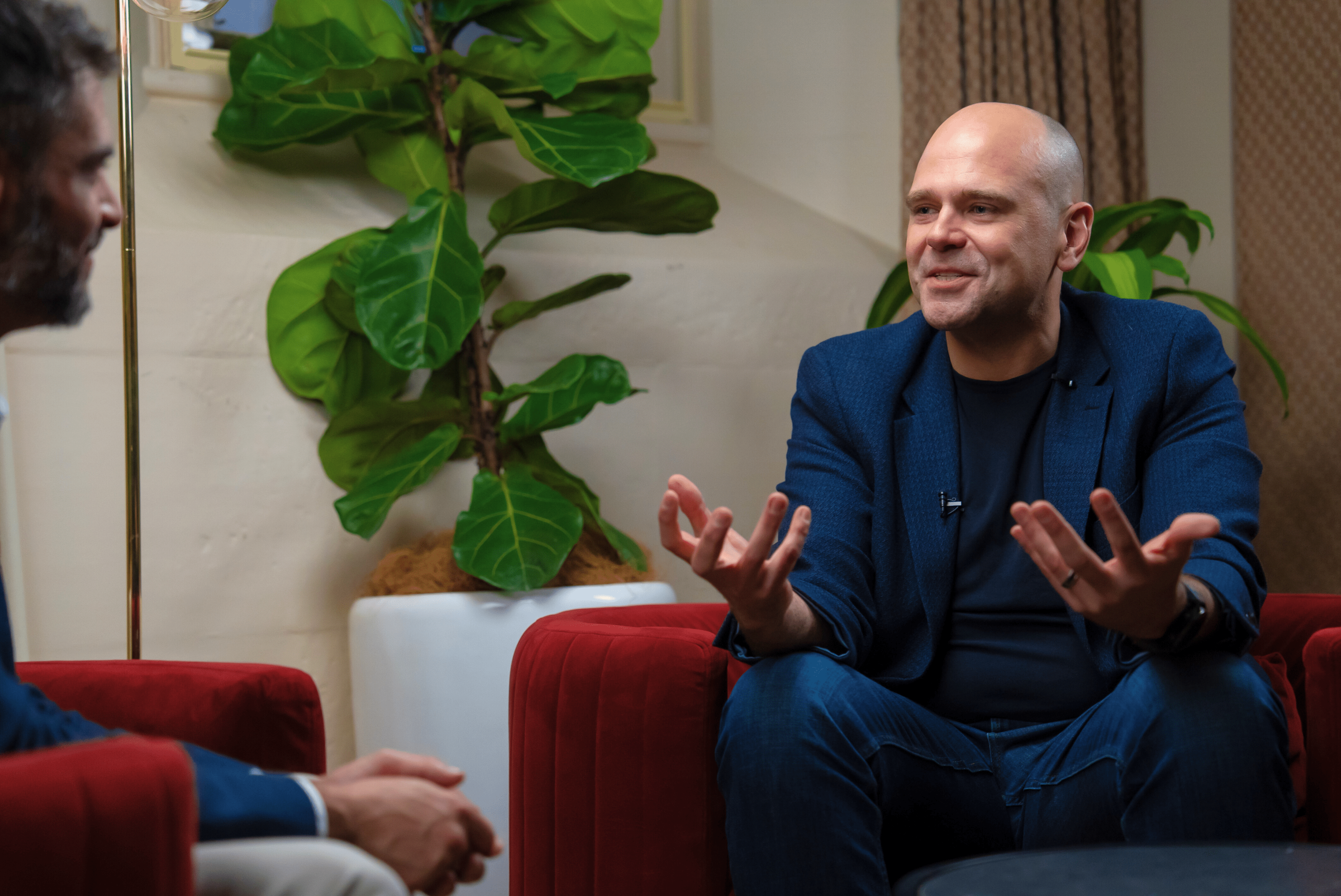
This hands-on leadership approach is helping reshape how organisations operationalise AI.
Scale digital governance through embedded intelligence
Governance is often seen as a blocker, but leaders at Digital Edge reframed it as an accelerator when paired with automation and clarity.
Katrina Read, Director of Transformation for APJ at ServiceNow, explained how workflow automation and AI agents reduce risk by guiding employees through compliant actions.
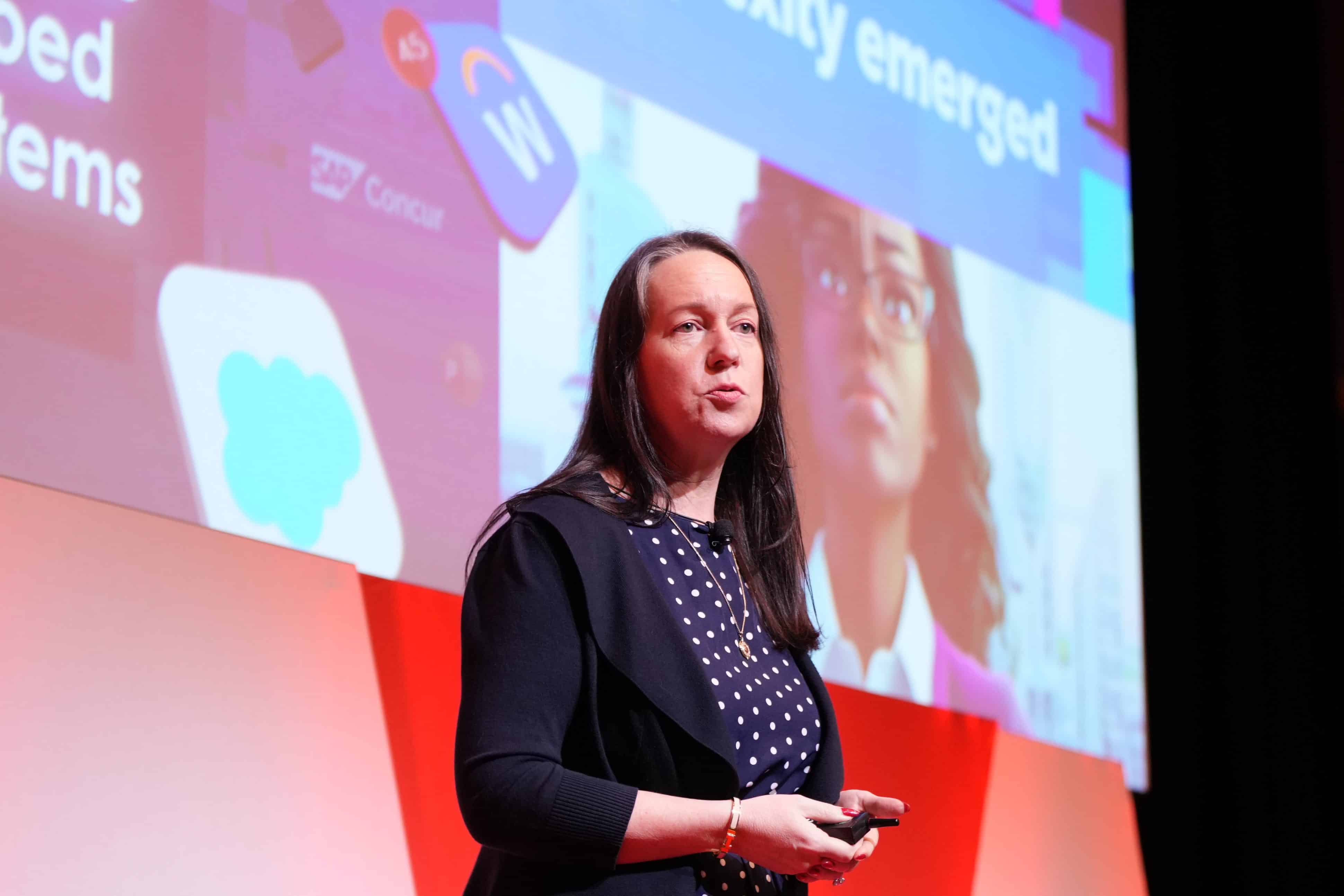
The goal is not oversight, but enablement.
Tom shared how the City of Sydney bakes governance into delivery, ensuring that data use and experience design meet regulatory requirements without slowing progress.
This approach helps digital teams move faster without sacrificing trust or control.
Gabby’s data confirms the need for this.
Nearly half of digital leaders lack confidence in their data quality and lineage.
Without foundational governance, AI use cases and personalisation efforts struggle to scale.
Digital Edge interviewees offered further examples of governance as an enabler.
Lucius Botha, GM of Transformation at SKOPE, shared how the business implemented a formal data stewardship model backed by executive oversight and monthly quality reviews.
Their unified CRM and cloud data infrastructure support faster service delivery while reinforcing consistent data quality across teams.
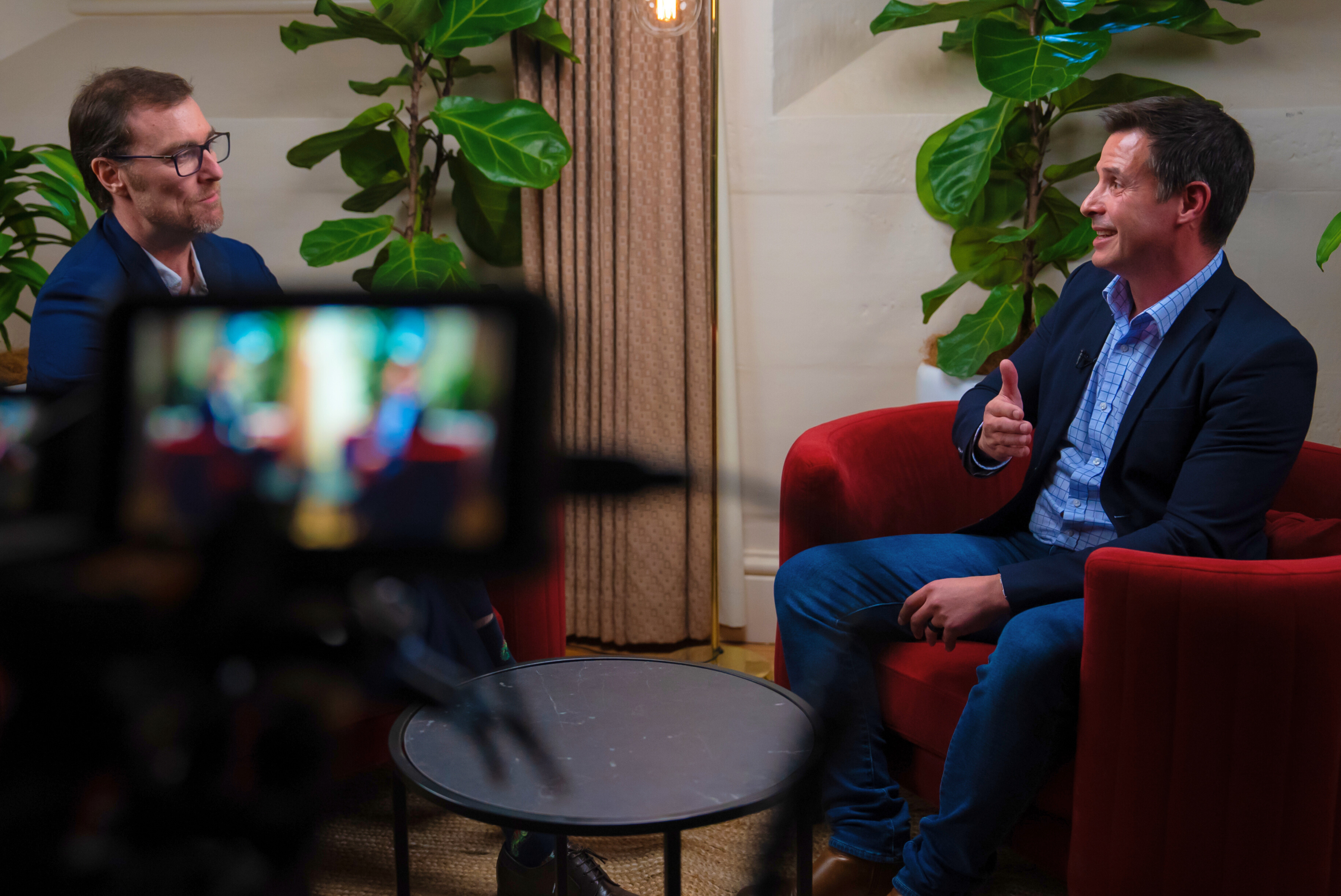
In another interview, Kurt Brissett, Chief Digital and Information Officer at Built, described how AI-enriched 3D models are used as a shared control layer across the construction lifecycle.
These models align stakeholders, streamline compliance, and allow early detection of issues, demonstrating how embedded governance can enhance both speed and accuracy in complex delivery environments.

Invest in internal fluency to scale AI responsibly
Many teams are experimenting with AI, but few are building lasting capability.
Gabby reported that digital maturity is not advancing evenly across the organisation.
Inconsistent understanding and skill gaps prevent teams from applying tools effectively.
Christina described how Service NSW approaches this by embedding education into digital initiatives.
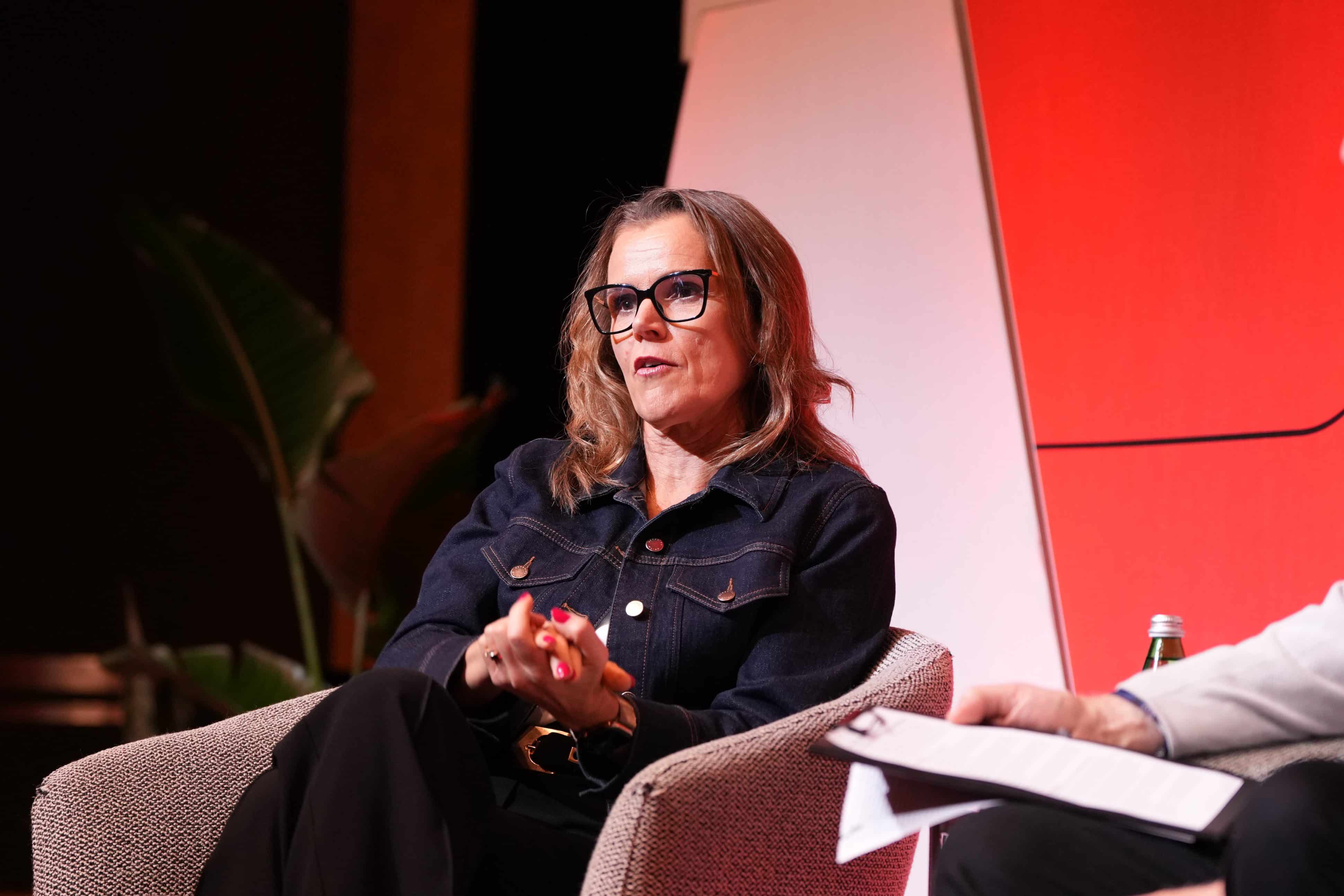
Rather than training for tools, her team focuses on fluency around outcomes, ethics, and customer impact.
Katrina added that internal champions and guided workflows play a key role in helping employees understand how AI supports, rather than replaces, their responsibilities.
Prof. Marek Kowalkiewicz, Professor and Chair in Digital Economy at QUT Business School, outlined how leaders can shape a culture of capability.
He emphasised the importance of experimentation, domain-specific policies, and leadership fluency.
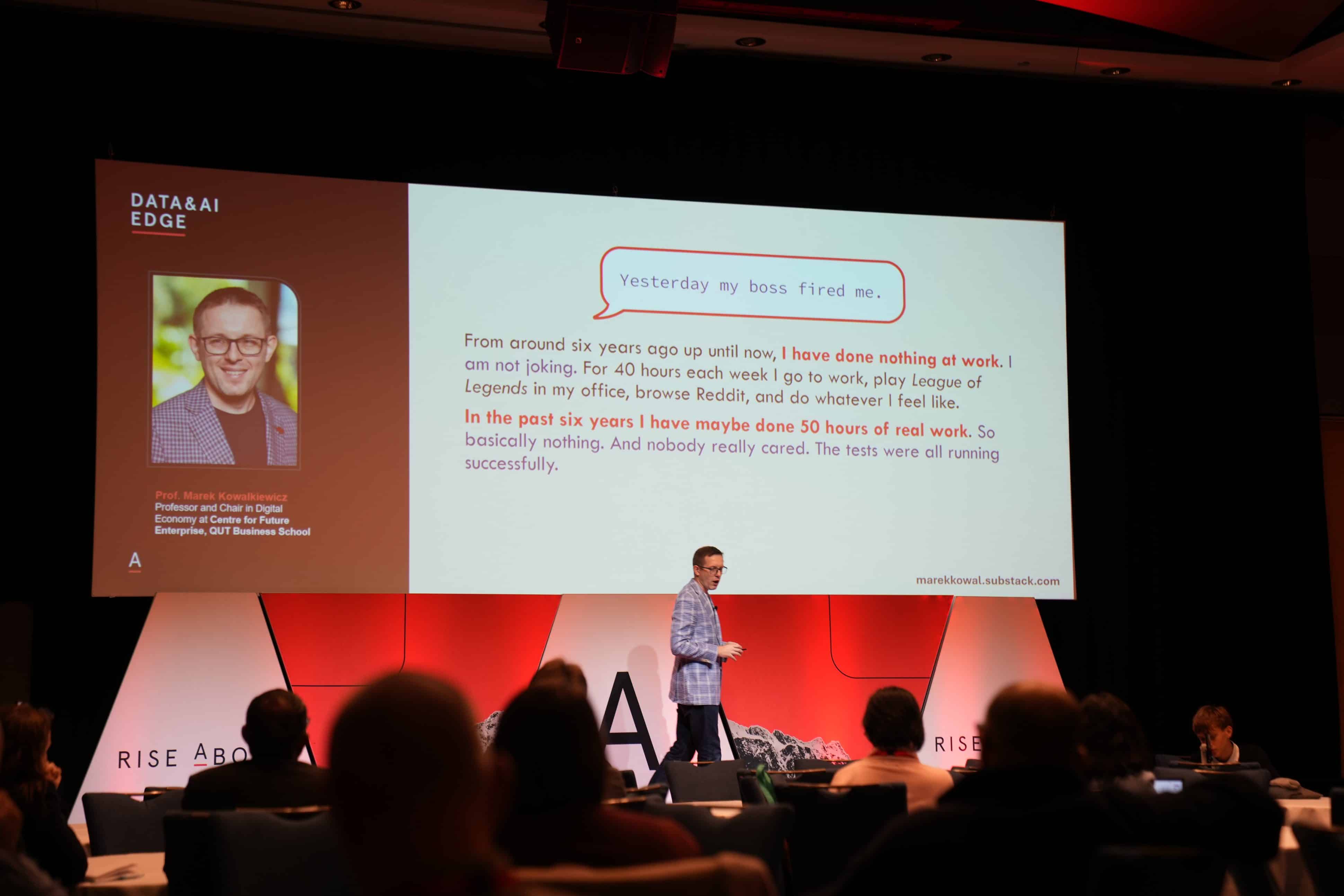
AI needs to be understood as a design asset and operational lever, not a separate stream of innovation.
What’s next for Australian digital leaders:
Digital Edge 2025 revealed that Australia’s digital executives are focused on execution, alignment, and real-world outcomes.
The next phase of digital leadership will require:
- Embedding simplicity across experiences, platforms, and internal workflows to reduce customer and employee effort
- Structuring cross-functional teams around shared outcomes, not legacy roles or reporting lines
- Operationalising AI through narrow, high-impact use cases tied to clear business metrics
- Scaling governance and automation together to increase agility without compromising compliance
- Building internal capability through targeted education, fluency programs, and continuous experimentation
- Aligning digital investments to measurable product, service, and experience improvements
Australian organisations capable of accelerating delivery while reducing complexity will lead the next wave of digital transformation.
Those who unify vision, talent, and tools will deliver experiences that win both market share and loyalty.




